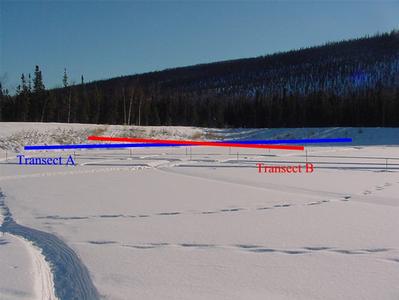5 March, 2002
What's so special about March? Apparently March is a favorite
month for most Alaskan residents. The snow is still present, the air
is still cold, BUT the sun is out most of the day! I could
easily bask in the sun at sub-zero temperatures with my parka and
Carrharts.
The day length is increasing everyday. Alaska has almost 11 hours of
sunlight compared to 4.5 hours in January. By the time I depart
Fairbanks at the end of April, the day length will have increased to
almost 17 hours. My Environmental science students are using a
web-based sun calculator to compare day length of Vancouver,
Washington and Fairbanks, Alaska.
On one end of University of Alaska campus is a small residential area
for native Alaskan students and visiting scientists. Lynette and I
share the Nordic House, a nice, cozy log home with 4 bedrooms with
two Russian scientists. Sergi, an anthropologist and Andrei,
studying sea ice with GI's German scientists both hail from St.
Petersburg.
Announcements! Shannon's pond, also known as 34-Mile pond is
now called Jalpertia pond. This unique name was created by a small
group of students who will be working on data calculations for heat
flow.
Lesson 1: Density In order to find density values, we need two
simple measurements: snow samples and snow depth. Jalpertia pond has
two transects lines crossing over at the middle, forming four
quadrants. Snow samples are collected from each quadrant. Density is
calculated at mass per unit volume (D = M / V). Volume is pi
r2 h. Using the same snow tube for all snow samples, we use the same
area, which is 21.711909 cm2. Snow depth (h) is multiplied with the
area and then divided into mass.
Let's practice:
Mass / pi r2 x h
Quadrant 1 (P1) 83.1 g 21.711909 cm2 x 24.5 cm
Quadrant 2 (P2) 123.6 g 21.711909 cm2 x 35.5 cm
Quadrant 3 (P3) 82.2 g 21.711909 cm2 x 23.5 cm
Quadrant 4 (P4) 106.9 g 21.711909 cm2 x 33.0 cm
See below for answers.

1. Transect A (vertical line) and Transect B (horizontal line) cross in the middle and snow samples are collected from each quadrant.

2. Transect lines A and B cross in the middle. Stakes are marked at every 5 meters on each transect.
Answers
P1 = .1562201 g/cm3
P2 = .1603585 g/cm3
P3 = .1611038g/cm3
P4 = .1492614 g/cm3
Contact the TEA in the field at
.
If you cannot connect through your browser, copy the
TEA's e-mail address in the "To:" line of
your favorite e-mail package.
|
